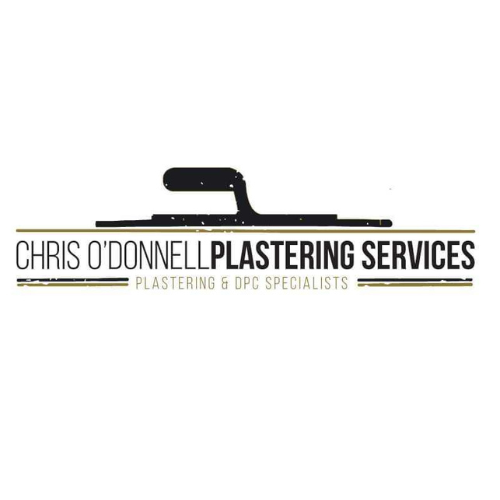A damp proof course (DPC) is one of the most essential protections for your home, preventing moisture from rising up through the walls and causing structural damage. However, like many elements of your property, a damp proof course doesn't last forever. Over time, it may fail, leading to serious damp issues that can affect your home’s structure, appearance, and even your health.
So, how do you know when it's time to replace your damp proof course? In this article, we'll explain the signs to watch for, why a failing DPC is a problem, and what you can do about it.
What is a Damp Proof Course (DPC)?
A damp proof course is a barrier installed near the base of your walls to prevent moisture from the ground from rising through the brickwork. It’s typically made from materials such as slate, plastic, or bitumen and is an integral part of protecting your home from rising damp.
Why Does a DPC Fail?
There are several reasons why your damp proof course may fail:
- Age of the property – Older homes may have a DPC made from materials that degrade over time, such as slate or bitumen.
- Wear and tear – Over time, exposure to the elements can cause the DPC to deteriorate, reducing its effectiveness.
- Poor installation – If your DPC was not installed correctly, it may not provide adequate protection from moisture.
- Damage – Changes to your property, such as renovations or structural shifts, can damage the DPC and cause it to fail.
Signs Your Damp Proof Course Needs Replacing
There are several warning signs that may indicate your damp proof course is no longer doing its job effectively. If you notice any of these issues, it could be time to seek professional advice about replacing your DPC.
1. Damp Patches on Walls
One of the most common signs of a failing DPC is damp patches appearing on the lower parts of your walls. Rising damp typically affects the bottom metre of your walls, so if you see dampness around skirting boards or just above, it’s a strong indicator that your DPC may need attention.
2. Peeling Wallpaper or Paint
When moisture seeps into your walls, it can cause the wallpaper to peel or paint to bubble and flake. This is especially noticeable in older homes where the DPC may have degraded. If the damage is concentrated on the lower walls, it's a sign that your DPC could be compromised.
3. Musty Smell
A persistent musty smell in your home can be a sign of damp. Moisture that seeps into your walls can lead to mould and mildew growth, which creates that distinctive, unpleasant odour. If you notice a musty smell in conjunction with other signs like damp patches or peeling paint, it’s likely time to have your DPC inspected.
4. Mould Growth
Mould and mildew growth along the lower sections of your walls can indicate rising damp. While mould can also be caused by condensation, it is often found in the same areas as rising damp, particularly if the DPC has failed.
5. Tide Marks on Walls
Rising damp often leaves a tide mark along the bottom of walls, where moisture has evaporated and left behind salts and other residue. These marks usually appear between 30-90cm above the floor and are a key indicator of rising damp due to a failed or ineffective DPC.
6. Crumbly or Flaking Plaster
Moisture entering your walls can cause the plaster to crumble or flake away. If you notice this happening in the lower sections of your walls, it's another clear sign that your damp proof course is no longer functioning as it should.
Why You Shouldn’t Delay Replacing Your Damp Proof Course
If you notice any of the above signs, it’s crucial to act quickly. Failing to address a faulty DPC can lead to:
- Structural damage – Rising damp can weaken brickwork, plaster, and wood, causing serious structural issues over time.
- Health risks – Damp environments encourage mould growth, which can cause respiratory issues, particularly in people with allergies or asthma.
- Decreased property value – Damp damage can significantly reduce the value of your home, making it less attractive to potential buyers.
What to Do if Your DPC Needs Replacing
If you suspect your damp proof course has failed, the first step is to arrange for a professional survey of your property. A qualified damp proofing specialist will be able to:
- Assess the extent of the damp problem
- Identify the cause of the damp (whether it’s rising damp, penetrating damp, or condensation)
- Recommend the most effective solution, which may include replacing the DPC
Options for Replacing Your Damp Proof Course
There are several methods for replacing or repairing a damp proof course, depending on the type of property and the severity of the damp:
- Chemical DPC Injection – This is a popular modern method, where a chemical damp proof course is injected into the walls to form a new moisture barrier. It’s a cost-effective solution and less disruptive than traditional methods.
- Physical DPC Replacement – In some cases, a physical DPC, such as a new plastic membrane, may need to be installed. This is often more suitable for older properties with traditional construction materials.
- Electro-Osmotic Damp Proofing – This method uses small electric pulses to redirect moisture away from your walls. It’s typically used in cases where conventional methods may not be as effective.
Conclusion
Your damp proof course is a vital part of your home’s protection against rising damp. If you notice signs like damp patches, peeling paint, or mould, it could be time to replace your DPC. Acting quickly will help prevent further damage to your property and ensure your home remains dry and healthy.
Don’t wait until the problem gets worse. Contact a professional damp proofing company to assess the issue and recommend the best solution for your home.
